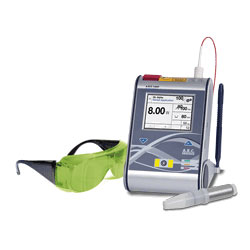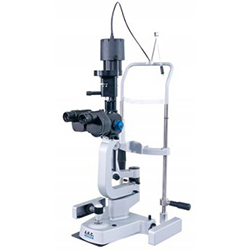TOMEY - Nemačka
Lorem ipsum dolor sit amet, consectetur adipiscing elit, sed do eiusmod tempor incididunt ut labore et dolore magna aliqua. Ut enim ad minim veniam, quis nostrud exercitation ullamco laboris nisi ut aliquip ex ea commodo consequat. Duis aute irure dolor in reprehenderit in voluptate velit esse cillum dolore eu fugiat nulla pariatur. Excepteur sint occaecat cupidatat non proident, sunt in culpa qui officia deserunt mollit anim id est laborum.
Izaberi kategoriju
 THE WHOLE PACKAGE FOR OPHTHALMOLOGY
THE WHOLE PACKAGE FOR OPHTHALMOLOGY
The Dacroyostorhinostomy (DCR) can be carried out minimally invasive via the lacrimal passages. For this purpose not only our Fox diode laser is excellent but also the Wolf diode laser. The bare fiber is moved via the lacrimal passage to the lacrimal sack and opens the passage to the nose. Of course, obstructions in the lacrimal passages can be removed gently and minimally invasive.
 Glaucoma is a serious disease
Glaucoma is a serious disease
An untreated Glaucoma is often causing blindness – even by today. There are different reasons for a Glaucoma affection. The most common is a high intra ocular pressure (IOD). Long before the visual acuity is affected and parts are vanishing from the visual field, the disease is already existent and should be treated. As an alternative to the intra ocular pressure reduction through drug administration, the SLT treatment with our Trabeculas Laser is highly recommendable. This treatment of the wide angle glaucoma is nearly painless and is done with the slitlamp in the ophthalmology doctors office.
In serious cases we offer the Fox laser also for the ciliary body coagulation. The treatment is very efficient for glaucoma with high intra ocular pressure. There is not much effort needed from a physician to run this art of treatment.
For the treatment of an angle-closure glaucoma, a rare but serious disease, we offer you our Q-Las which is a suitable laser for this treatment.
Laser treatment:
SLT with the SLT laser Trabeculas
Cyclophotocoagulation (CPC) with the diode laser Fox
Iridotomy with the Nd:YAG-Laser Q-Las

What is a cataract?
Cataract is the most common reason for visual impairment worldwide. It usually affects people aged over 50+ but may also occur due to trauma, radiation exposure or be present from birth. First signs people recognize are a blurred and cloudy vision, difficulty reading and a sensitive reaction to bright light in the night.
By severe visual impairment an improvement by eyeglasses is not possible anymore and a surgery is the last option to restore vision.
A turbid lens cannot be cured by medical treatment. Therefore a surgery is the only reasonable conclusion.
How is cataract surgery performed?
Since more than 30 years cataract surgery is the most performed procedure worldwide and in Germany more than 800,000 patients undergo surgeries without complications, too. Up to date emulsification and the extraction of the lens with ultrasound is the gold standard.
The opaque lens is removed micro surgically and replaced by a new artificial lens (IOL = intraocular lens)
Procedures are usually performed in local anesthesia and patients are able to regenerate afterwards in their familiar environment. The surgery itself takes 10 to 20 minutes. Postoperative recovery period is usually very short and after a few days the patient can follow a daily routine. The final result – the optimal visual acuity – can be expected after 3 months at most.
What are the main advantages of the Nano Laser Cataract Surgery?
The CETUS is a totally new approach for cataract treatment. The lens is also chopped and removed but the main difference is the realization of doing. Traditional phacoemulsification is always linked to a high energy exposure to the eye and the created heat can lead to a loss of corneal cells (corneal endothelium) and edema. The relatively new laser technology offers the patient a very gentle alternative to ultrasound therapy. During the Nano Laser Cataract Surgery (NLCS) energy is released specifically and can be varied by the surgeon. Consequently thermal effects can be reduced to a minimum. A protection of the corneal endothelium and surrounding tissue is guaranteed as a result the healing process is more efficient and can be accelerated.
Safety has the highest priority during any surgical procedure, of course. In this particular field laser supported surgery has a very prominent feature: The whole procedure with the CETUS includes single use material which means that every patient gets its individual equipment. The risk of infections and cross contaminations is reduced to a minimum. Especially patients with complicated eye diseases (Cornea Guttata, Fuchs Endotheldystrophy) or with reduced cell quantity are predestinated for this innovative technique to prevent inflammation and protect residual cell compartments.
The advantages:
– Individual surgery
– Short healing process
– Minimized infection risk
– Extremely slight energy exposure
– Minimal influence to corneal structures
– Minimized risk of capsular rupture
Who is your specialist contact person?
Information for the Ophthalmologist:
We welcome you to one of our reference centers for a laser demonstration and discuss and answer all your questions related to this new technology
Cataract surgery:
Cetus

Restoring the eyesight
The cataract surgery restores the eyesight after lens clouding caused by cataract. Still there are a few patients, with reoccurring cataract after the lens implantation surgery. The visual acuity is reduced again and a re-treatment is indispensable.
With our “Q-Las” we can help to restore the eyesight.
The secondly common application of the Q-Las is the Iridotomy for the treatment of the angle block glaucoma. In this case little openings are lasered into the iris to balance the pressure difference between the anterior and posterior chamber of the eye in order to restore the intra ocular fluid through the trabecular meshwork.
Laser treatment:
Iridtomy with Q-Las

Coagulation on the retina
Diseases on the retina require often a laser treatment. Ablation of the retina or bleeding have to be stopped to avoid further disadvantages for the patient’s eye. A.R.C. Laser offers the Classic laser for the treatment of retinal disease. This device fits into every doctor’s office and matches comfortably with the different slitlamps. We provide an endo-version of the laser for the operating room. Additionally, the small portable Fox laser (810 nm) is also usable for transcleral retina coagulation, it can be applied via a head-mounted ophthalmoscope or directly with an endoprobe.
Laser treatment:
Laser coagulation with classic
Laser coagulation with our Endo Laser FOX 810 nm

